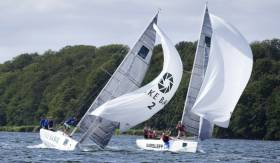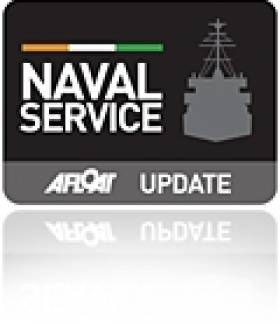Displaying items by tag: Helsinki
10th Place For Howth's Kissane At Helsinki Women's Match
#MatchRacing - Howth Yacht Club's Diana Kissane and crew finished 10th in the first round of the Women's International Match Racing Series in Helsinki on Friday (1 July).
Kissane and crew Lizzy McDowell (Malahide YC), Isabella Morehead (Cork), Ellen Cahill (Mayo) won three of their 11 round-robin contests but it wasn't enough to take them through to the quarter-final knockout stage at the NJK Sailing Center, where the Swedish boat skippered by Anna Östling beat France's Pauline Courtois and crew in two straight races in the final.
As previously reported on Afloat.ie, the same venue in the Finnish capital is set to host the Women's Match Racing World Championship in 2017.
LE Roisin On Goodwill Visit to Tallinn
Bilbao Returns to Baltic Sea 'Roots'
For the last 17 years the Pride of Bilbao has operated between Portsmouth and Bilbao under charter to P&O. Built in 1986, she was launched as Olympia for Viking Line between Stockholm and Helsinki, then the Baltic Sea ferry was one of the largest overnight passenger capacity ferries in the world. At 177 metres long the vessel can accommodate 2552-passengers, 600-vehicles and space for 77-trucks. She has a sister, the Mariella, which currently operates on Viking Line's Stockholm-Mariehamn–Helsinki service.
In 1993 the vessel was renamed Pride of Bilbao and launched a new service on the Bay of Biscay, under charter from her Scandinavian owners. The following year ICG purchased the Pride of Bilbao from Viking Line and she was re-registered to the Bahamas. The vessel was subsequently entered into a British bare-boat charter arrangement between P&O Ferries and ICG. Due to unsustainable losses the route closed on 28 September this year but rivals Brittany Ferries soon shortly announced they would reopen the route in Spring 2011.
Throughout the Pride of Bilbao's career under ICG (parent company of Irish Ferries), the cruiseferry has only once visited Ireland. In between Spanish sailings, she was sub-chartered for a three-day Christmas mini-cruise from Portsmouth to Dublin in 2004, where the Pride of Bilbao berthed at the ferryport close to the ICG headquarters.































































